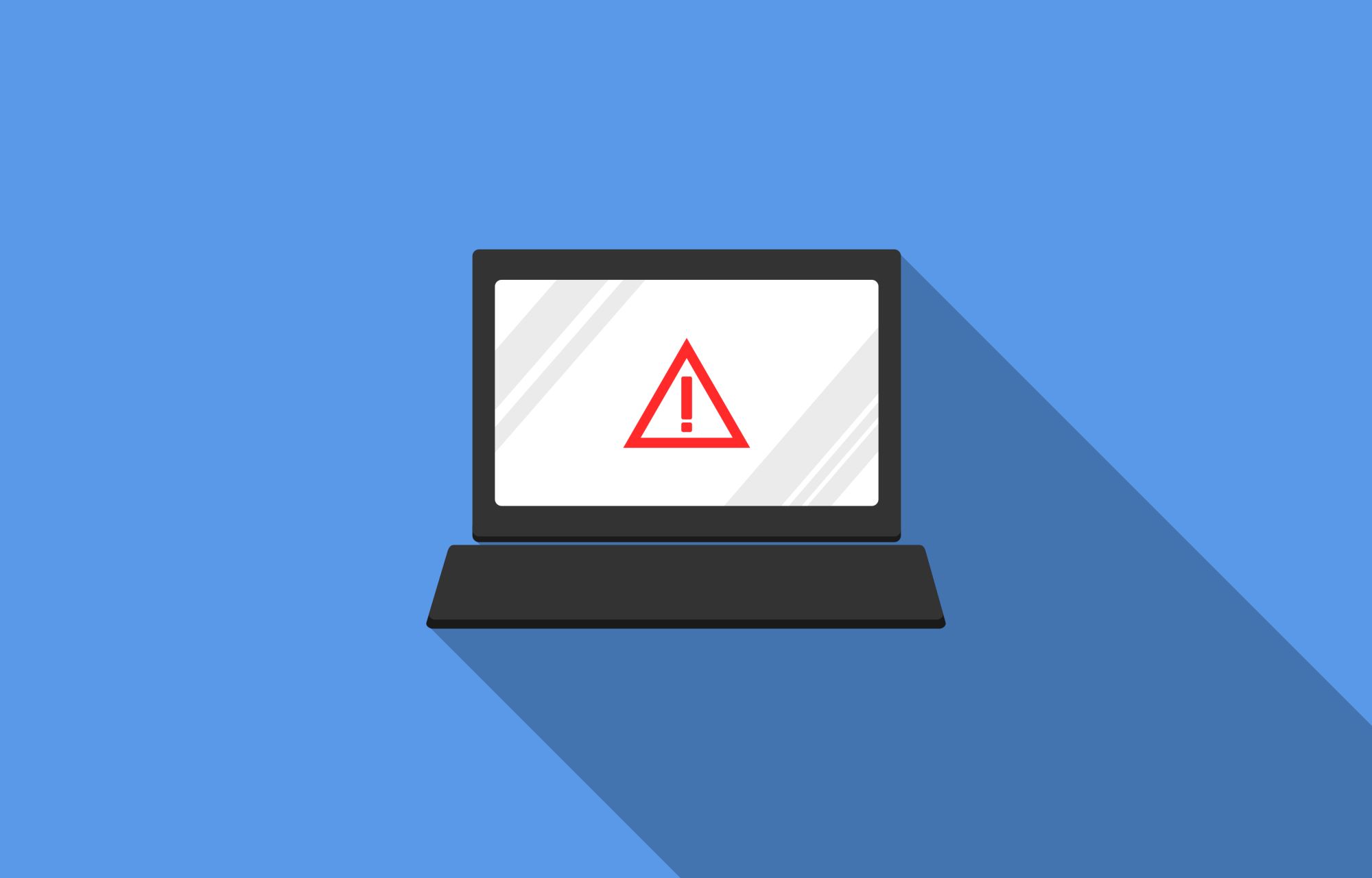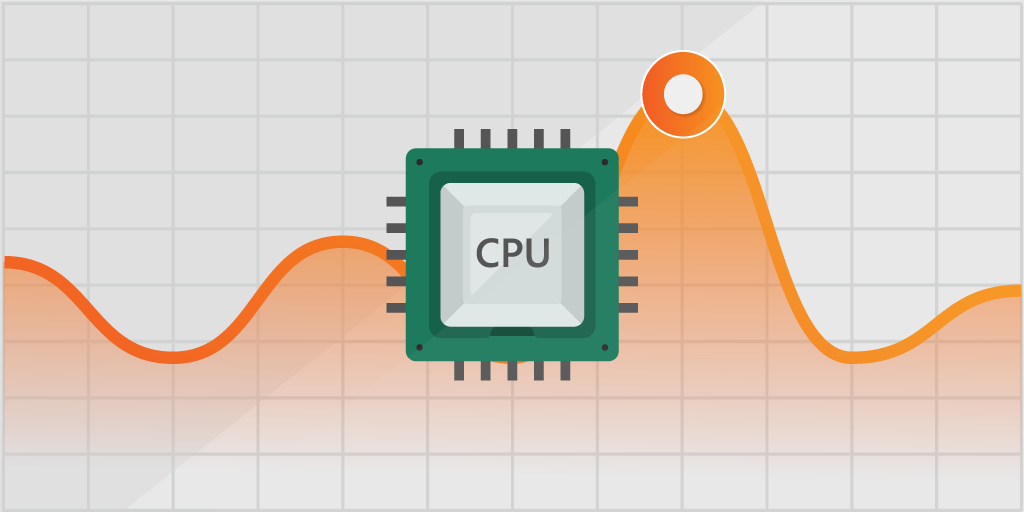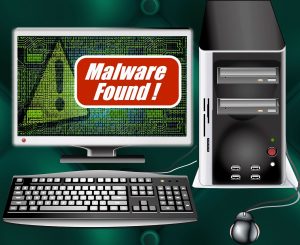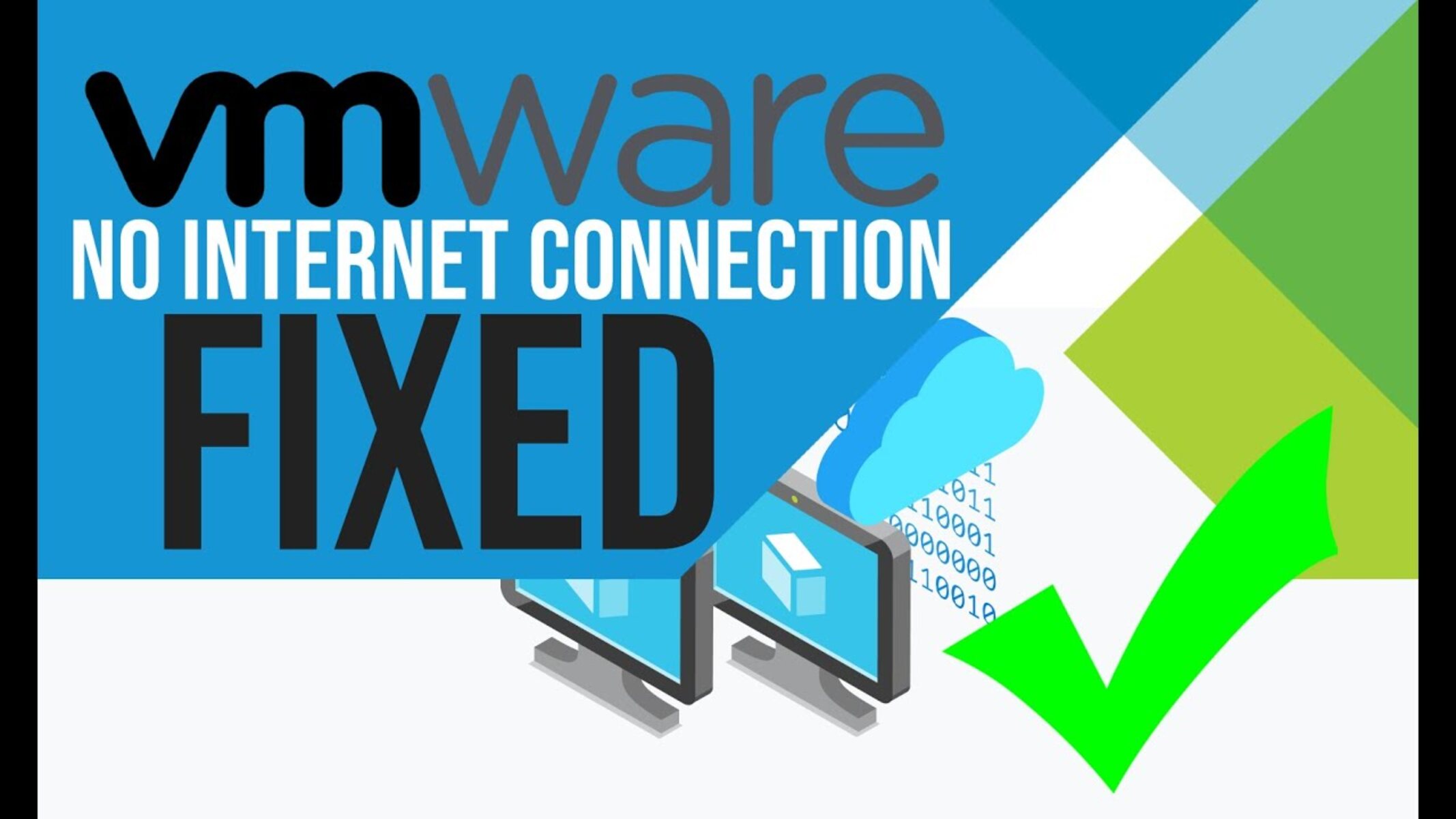Introduction
Virtual machines have become an integral part of modern computing, providing a flexible and efficient way to run multiple operating systems on a single physical machine. However, just like any other system, virtual machines are not impervious to malware and viruses. It is important to understand the implications of a virus on a virtual machine and how to handle such situations.
A virtual machine is a software emulation of a physical computer, capable of running its own operating system and applications independently. It allows users to create isolated environments in which they can test software, run multiple operating systems, or perform specific tasks without interfering with the host operating system.
While virtual machines provide a layer of protection by isolating their operations from the host system, they are not immune to malware attacks. Similar to a physical computer, a virtual machine can also become infected with viruses through various means, such as malicious software downloads, infected email attachments, or visiting compromised websites.
When a virus infects a virtual machine, it typically remains contained within the virtual operating system and does not directly affect the host system. This isolation provides a level of security, as the virus is limited to the virtual environment and cannot spread to other parts of the computer or network.
However, this does not mean that a virus on a virtual machine is harmless. Depending on the nature of the virus, it can still pose several risks and have adverse effects on the virtual machine’s operations and data.
In the following sections, we will explore the potential risks of a virus on a virtual machine and discuss the steps to remove it. We will also provide preventive measures to avoid virus infections on virtual machines, ensuring a secure and efficient computing experience.
What is a Virtual Machine?
A virtual machine (VM) is a software emulation of a physical computer system. It allows users to run multiple operating systems and applications on a single physical machine simultaneously. By virtualizing the hardware resources, such as the CPU, memory, storage, and network interfaces, virtual machines provide an isolated environment where different operating systems can coexist and function independently.
Virtual machines are created using specialized software called a hypervisor. The hypervisor manages the allocation of resources and facilitates the communication between the virtual machines and the underlying hardware. There are two types of hypervisors: Type 1, also known as bare-metal hypervisors, which run directly on the host hardware, and Type 2, which require a host operating system.
Each virtual machine is provided with a complete set of virtualized hardware resources, including a virtual CPU, RAM, disk storage, and network interfaces. This virtualization layer enables the VM to function as a self-contained entity, capable of running its own operating system and applications. It allows users to take advantage of the benefits of multiple operating systems, such as compatibility with specific software, testing different software configurations, or running legacy applications.
The advantages of virtual machines extend beyond simply running multiple operating systems on a single machine. They also provide flexibility, scalability, and cost efficiency. VMs can be easily created, cloned, and destroyed, allowing for quick deployment and scalability of computing resources. Additionally, by consolidating multiple VMs onto a single physical server, organizations can optimize resource utilization and reduce hardware costs.
Virtual machines are widely used in various industries and scenarios. They are commonly employed in testing and development environments, where developers can create isolated instances to test new software or perform compatibility checks. Virtual machines are also utilized in server consolidation efforts, where multiple servers are consolidated onto fewer physical machines, resulting in reduced power consumption and maintenance costs.
Overall, virtual machines provide a flexible and efficient solution for running multiple operating systems on a single physical machine. By leveraging the benefits of virtualization, users can create isolated environments, optimize resource utilization, and streamline various computing tasks. However, it is important to understand the potential risks and considerations related to running virtual machines, including the possibility of malware and virus infections.
How does a Virtual Machine get Infected?
While virtual machines offer a layer of isolation and protection, they are not immune to malware and virus infections. Similar to physical computers, virtual machines can become infected through various means. Here are some common ways a virtual machine can get infected:
1. Malicious Software Downloads: When downloading files or software from untrusted sources, there is a risk of inadvertently downloading malware onto the virtual machine. This can happen through malicious links, infected attachments, or compromised websites.
2. Phishing Attacks: Phishing emails can lure users into providing sensitive information or downloading malicious software. If a user falls victim to a phishing attack and opens an infected attachment or clicks on a malicious link within a virtual machine, the malware can easily spread and infect the system.
3. Unpatched Software: Virtual machines, like any other operating system, require regular updates and patches to address security vulnerabilities. Failure to apply these updates can leave the system vulnerable to malware and virus attacks.
4. Shared Storage: If multiple virtual machines share the same storage resources, there is a risk of malware spreading between the virtual machines through shared files or storage drives. This can happen if one infected virtual machine shares files with another, allowing the malware to propagate.
5. Network Vulnerabilities: Virtual machines are interconnected through networks, making them susceptible to network-based attacks. If the network infrastructure is not properly secured, the virtual machine can be exposed to malware and viruses through network-based exploits.
It is important to note that the host operating system, where the virtual machines reside, can also play a crucial role in the virtual machine’s security. If the host system is compromised, it can potentially impact the security of the virtual machines running on it.
To mitigate the risk of infection, it is essential to employ security best practices such as using reputable antivirus software, regularly updating software and operating systems, exercising caution when downloading files or opening email attachments, and implementing strong network security measures.
By being proactive and vigilant in managing the security of virtual machines, users can minimize the likelihood of malware and virus infections, ensuring a safe and reliable computing environment.
Isolation of the Virus within the Virtual Machine
One of the key advantages of virtual machines is their ability to provide isolation and containment of virus infections within the virtualized environment. When a virus infects a virtual machine, it is typically confined within the boundaries of that specific virtual operating system and does not directly impact the host system or other virtual machines running on the same physical server.
This isolation is achieved through the virtualization layer, which creates a virtual environment for each virtual machine. Each virtual machine operates as an independent entity, with its own set of virtualized hardware resources, including CPU, memory, storage, and network interfaces.
When a virus is introduced into a virtual machine, it can spread and affect the files and processes within that specific virtual operating system. However, due to the virtual machine’s isolation, the virus is unable to propagate beyond the virtual boundaries.
This containment has several benefits:
1. Protection of the Host System: As the virus remains within the confines of the virtual machine, it cannot directly harm the host operating system. This safeguards the host system and ensures that other virtual machines running on the same physical server are not affected.
2. Preservation of Data: Since the virus is contained within the virtual machine, the risk of data loss or corruption is minimized. Other virtual machines and data stored on the host system are not at immediate risk of being compromised or infected.
3. Easier Removal and Recovery: The isolation of the virus within the virtual machine simplifies the process of removing the infection and recovering the virtual machine. It allows for targeted scanning and remediation efforts without the need to disrupt other virtual machines or the host system.
While the isolation of the virus within the virtual machine provides a level of security, it is important to remember that the virtual machine itself is still at risk. The virus can potentially cause significant damage to the files, applications, and data within the virtual environment, leading to a compromised computing experience.
Therefore, it is vital to take prompt action to remove the virus from the infected virtual machine and implement preventive measures to protect against future infections. This includes regular scanning using reputable antivirus software, applying security patches and updates, and practicing safe browsing habits within the virtual environment.
By maintaining the integrity and security of each virtual machine, users can reap the benefits of virtualization while minimizing the potential impact of virus infections.
Potential Risks of a Virus on a Virtual Machine
While the isolation of a virus within a virtual machine provides a level of containment and protection, it does not eliminate the potential risks and dangers associated with the presence of a virus. Here are some potential risks of a virus on a virtual machine:
1. Data Loss or Corruption: A virus can compromise files, applications, and data stored within the infected virtual machine. It can delete or modify files, causing data loss or corruption. This can have severe consequences if important or sensitive data is affected.
2. Performance Degradation: Viruses often consume system resources and can cause a significant reduction in the performance of the infected virtual machine. Sluggishness, increased response times, and system freezes are common symptoms of an infected virtual machine.
3. Spreading to Other Virtual Machines: While the virus is contained within the infected virtual machine, there is still a risk of it spreading to other virtual machines running on the same physical server if proper isolation measures are not in place. This can occur through shared storage, infected files, or network vulnerabilities.
4. Compromised Network Security: A virus on a virtual machine can compromise the network security, exposing sensitive data, and potentially giving unauthorized access to other systems or virtual machines within the same network.
5. Disruption of Services: If the infected virtual machine is part of a larger system or network, the virus can disrupt services and affect the overall availability and functionality of the system. This can result in downtime, reduced productivity, and financial losses.
6. Unauthorized Access: Some viruses are designed to gain unauthorized access to the infected system or virtual machine. This can lead to data breaches, unauthorized use of system resources, and potential exploitation of sensitive information.
7. Damage to Reputational or Business Impact: If a virus compromises customer data, sensitive business information, or intellectual property within a virtual machine, it can have long-lasting consequences on the reputation of the organization. Business continuity and trust may be affected, leading to financial and operational setbacks.
It is essential to closely monitor the virtual environment, regularly scan virtual machines for viruses, and take immediate action to mitigate risks as soon as an infection is detected. This may include isolating the infected virtual machine, removing the virus using reputable antivirus software, and implementing security protocols to prevent future infections.
By understanding and addressing the potential risks of a virus on a virtual machine, users can effectively protect their virtualized environments, safeguard data, and ensure the smooth operation of their computing systems.
Impact on the Host Operating System
While virtual machines provide a layer of isolation and containment for viruses, it is important to recognize the potential impact that a virus within a virtual machine can have on the host operating system. Despite the virtual machine’s isolation, certain risks and consequences can extend beyond the virtualized environment:
1. Performance Degradation: A virus within a virtual machine can utilize system resources such as CPU, memory, and disk I/O, which can cause a noticeable performance degradation on the host operating system. Other processes and applications running on the host may experience decreased efficiency and increased response times.
2. Security Breach: Malware within a virtual machine can still pose a security threat to the host operating system. If the virus gains access to system files or exploits vulnerabilities in the virtualization software, it may be able to escape the virtual machine and compromise the host. This can result in unauthorized access, data breaches, and a higher degree of system vulnerability.
3. Network Compromise: If a virus within a virtual machine gains control over the network interfaces, it can potentially launch attacks against other computers or systems on the same network, including the host operating system. This can cause network disruptions, data breaches, and compromise the overall network security.
4. Resource Contention: In a shared virtualization environment, where multiple virtual machines run on the same physical server, a virus in one virtual machine can impact the performance of other virtual machines and the host operating system. The virus may compete for computing resources, leading to resource contention and affecting the overall system stability.
It is imperative to implement appropriate security measures to minimize the risk of infecting the host operating system. This includes regularly updating the virtualization software and the host operating system with the latest security patches, applying strict access controls to prevent unauthorized access between virtual machines and the host, and deploying reputable antivirus software on both the host and virtual machines.
Additionally, monitoring system performance and network activity can provide early indicators of any potential security breaches or virus infections. Proactive measures, such as isolating infected virtual machines, restricting network access, and taking immediate action to remove the virus, can help mitigate the impact on the host operating system and prevent further spread.
By taking these precautions and regularly evaluating the security posture of both the virtual machines and the underlying host operating system, users can maintain the integrity of their computing environment and minimize the potential impact of viruses within virtual machines.
Steps to Remove a Virus from a Virtual Machine
When a virus is detected within a virtual machine, it is crucial to take immediate action to remove it and prevent further damage. Here are the steps to effectively remove a virus from a virtual machine:
1. Isolate the infected virtual machine: Disconnect the infected virtual machine from the network to prevent the virus from spreading to other virtual machines or the host system. This isolation ensures that the virus is contained within the infected virtual machine.
2. Backup important data: Before proceeding with virus removal, ensure that any critical data within the infected virtual machine is backed up to a secure location. This protects valuable information in case of unforeseen complications during the removal process.
3. Update antivirus software: Update your antivirus software with the latest virus definitions to ensure it can effectively detect and remove the specific virus infecting the virtual machine. This step is crucial as new virus strains emerge regularly, and updating your antivirus software helps you stay protected against the latest threats.
4. Perform a thorough scan: Run a full system scan on the infected virtual machine using the updated antivirus software. The scan should examine all files, documents, applications, and system areas to detect and identify any traces of the virus.
5. Quarantine and delete infected files: When the antivirus scan identifies infected files, quarantine them to prevent further spread of the virus. Depending on the severity of the infection and the recommendations of the antivirus software, delete or repair the infected files. Quarantining and deleting infected files helps eliminate the virus from the virtual machine.
6. Remove system changes: Some viruses make modifications to the system settings or registry entries. To ensure complete removal, revert any system changes made by the virus to their original state. This can be done manually or by using system restore tools or the virus removal features of the antivirus software.
7. Update the virtual machine: After removing the virus, ensure that the virtual machine’s operating system and software are up to date. Applying the latest security patches and updates mitigates the risk of re-infection and helps close any potential security vulnerabilities.
8. Reconnect to the network: Once the virus has been successfully removed and the virtual machine is deemed clean, reconnect it to the network. However, it is advisable to monitor the virtual machine closely to ensure that no traces of the virus remain and that it does not exhibit any unusual behavior.
It is important to note that these steps might vary slightly depending on the specific antivirus software and virtualization platform being used. Always consult the documentation and guidelines provided by the antivirus software and virtualization platform for the most accurate instructions.
By following these steps and maintaining good cybersecurity practices, users can effectively remove viruses from virtual machines, safeguard their data and systems, and ensure a secure virtualized environment.
Preventive Measures to Avoid Virus Infections on Virtual Machines
Prevention is always better than cure when it comes to virus infections on virtual machines. By implementing proactive measures and following best practices, users can greatly reduce the risk of viruses infiltrating their virtualized environments. Here are some preventive measures to avoid virus infections on virtual machines:
1. Install reputable antivirus software: Use a reliable and up-to-date antivirus solution specifically designed for virtual machines. Regularly update the antivirus software to ensure it can effectively detect and remove the latest viruses and malware threats.
2. Enable automatic updates: Configure both the host system and virtual machines to automatically install security updates and patches. Regular updates help fix security vulnerabilities, preventing potential avenues for viruses to enter the virtual machines.
3. Use secure virtualization platforms: Choose reputable virtualization platforms that prioritize security and provide frequent security updates. Ensure that the chosen platform has a robust security architecture and strong isolation mechanisms to protect virtual machines from both internal and external threats.
4. Practice safe browsing habits: Encourage users within the virtual machine to exercise caution when browsing the internet. Avoid visiting suspicious websites, downloading files from untrusted sources, and clicking on suspicious links or pop-ups. Educate users about the risks of phishing attacks and the importance of email security.
5. Segment virtual networks: Separate the virtual machines into different network segments based on their security requirements. This limits the potential spread of viruses across the virtual network and minimizes the impact of an infected virtual machine on other machines within the same network.
6. Regularly back up critical data: Implement a robust backup strategy to regularly back up important data within the virtual machines. In the event of a virus infection, having recent backups ensures that data can be restored without significant loss or disruption.
7. Use strong access controls: Implement strong access controls for the virtual machines, including strong passwords or multi-factor authentication. Restrict access to administrative privileges to prevent unauthorized changes to the virtual machines that could leave them vulnerable to viruses.
8. Regularly monitor virtual machines: Continuously monitor the virtual machines for any signs of unusual activity or performance degradation that might indicate a virus infection. Implement effective logging and monitoring solutions to detect and respond to potential threats in real-time.
9. Stay educated: Stay informed about the latest trends in cyber threats, viruses, and malware. Regularly update your knowledge of best practices, security measures, and emerging security technologies. Keep up-to-date with security blogs, forums, and industry news to stay ahead of potential threats.
By adopting these preventive measures and maintaining a proactive approach to security, users can minimize the risk of virus infections on virtual machines, ensuring a secure and protected virtualized environment.
Conclusion
Virtual machines offer a versatile and efficient way to run multiple operating systems on a single physical machine. However, they are not immune to virus infections, and it is crucial to understand the risks and take appropriate measures to protect them.
Throughout this article, we have explored the concept of virtual machines, the potential sources of virus infections, and the impact they can have on both the virtual machines and the host operating system. We have also discussed the steps to remove viruses from virtual machines and highlighted preventive measures to avoid infections in the first place.
By leveraging the isolation capabilities of virtual machines, the spread of viruses can be contained within the virtualized environment, reducing the risk of harm to the host operating system and other virtual machines. Additionally, implementing strong security measures, such as using reputable antivirus software, regularly updating system software, practicing safe browsing habits, and segmenting virtual networks, plays a crucial role in mitigating the risk of virus infections.
Periodic monitoring and prompt action are key in maintaining the integrity of the virtual machines. Regular scans, system updates, and backups are essential practices to minimize the impact of viruses and ensure the proper functioning of the virtualized environment.
With a combination of proactive measures, user vigilance, and effective security practices, users can create a secure and reliable virtualized environment that maximizes the benefits of virtual machines while minimizing the risk of virus infections.
Remember, prevention is always better than dealing with the consequences of a virus. By taking the necessary precautions and staying informed about the evolving landscape of cybersecurity, users can enjoy the benefits of virtual machines while maintaining a robust and secure computing environment.

























